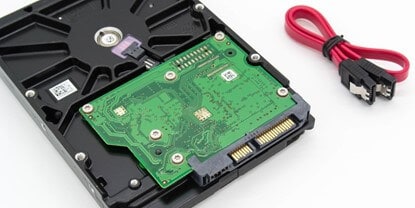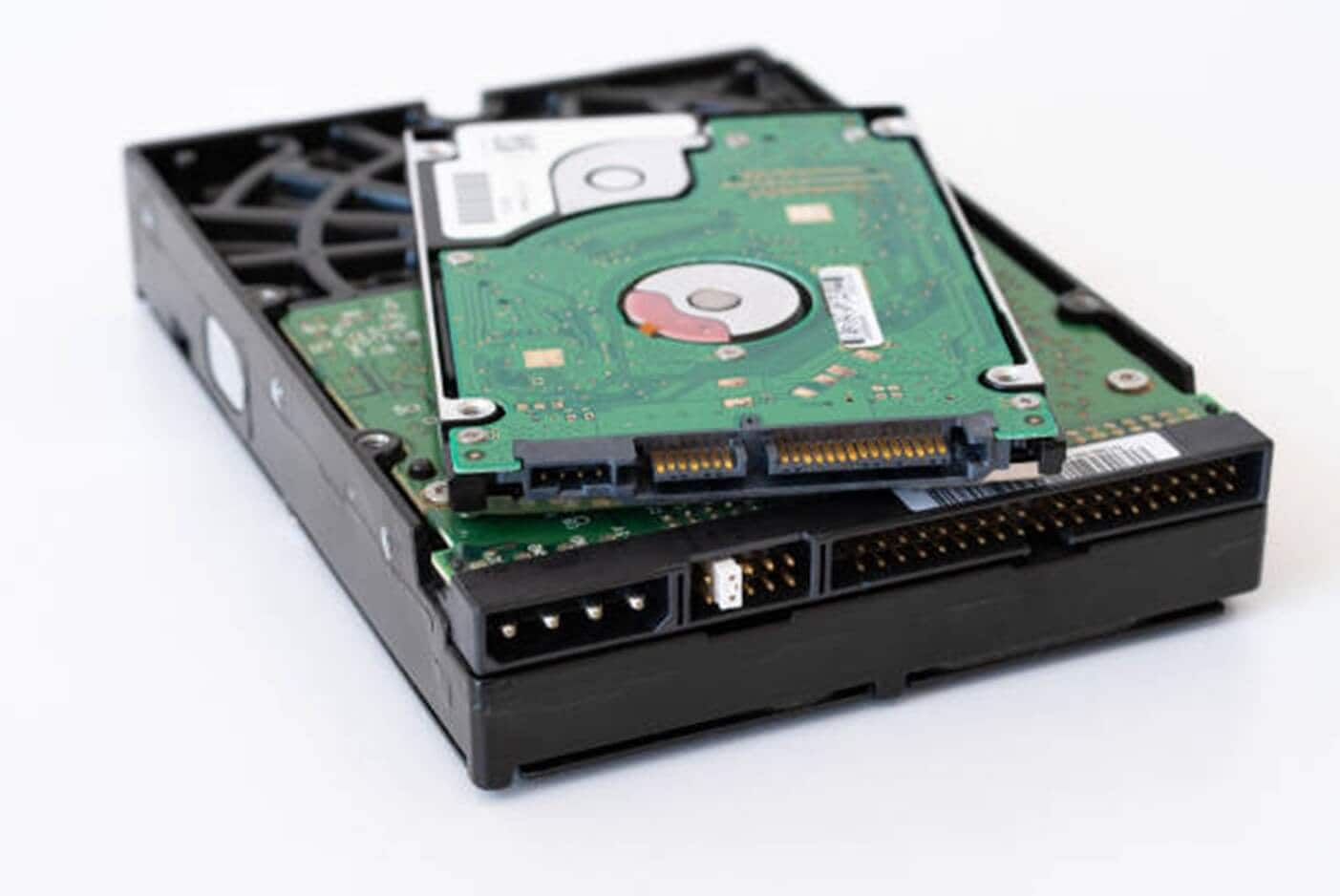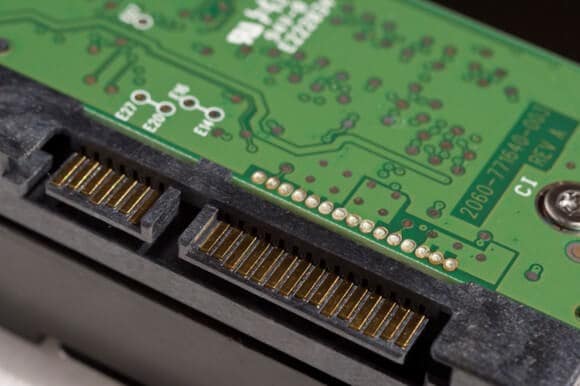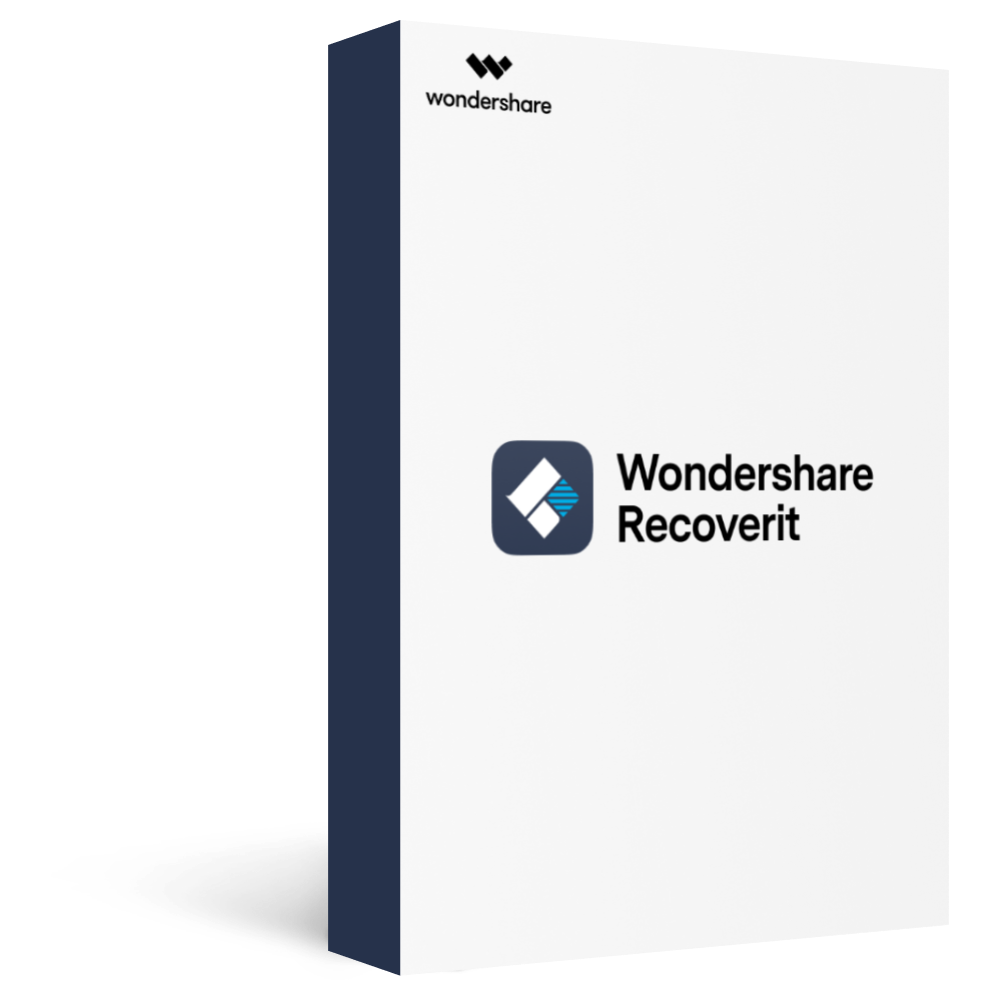
If you’ve owned a PC for the last decade, it was definitely a SATA-compatible device. Whether it’s a hard drive, a solid-state drive, or even an optical drive, they all used SATA until recently. However, you might be asking ‘what is SATA?’ That’s the question we’ll be covering in this article. It can get a bit confusing to understand. However, this article provides you with all the information you need. We’ll explore what SATA is and how it compares to SSD and HDD. On that note, let’s take a look.
What Is SATA?
Different computer products are available today; all are designated as SATA devices. SATA is a hard drive interface that you use to read and write data to and from the storage. This could be SSD, HDD, and the computer. They’re also known as Serial ATAs, and you can find them on servers, computers, gaming consoles, and even servers. For example, Microsoft and Sony installed SATA in their Xbox 360 and One, PlayStation 3 and 4.
Various SATA sizes are available; it all depends on the purpose. For example, the desktop SATA drives are about 5.79 inches long and 4 inches wide. People refer to them as 3.5-inch hard drives. On the other hand, you can find SATA devices that are 2.7 inches wide and 3.96 inches long. These are laptop SATA hard drives, and people refer to them as 2.5-inch hard drives.
Although we describe SATA connectors as a single port or connector, it features two ports: the power connector and the data connector. The data connector is a short, seven-pin connector, while the power connector is a 15-pin connector.
The two are crucial for SATA devices to work and perform different jobs. While the data cable provides a high-speed connection to the rest of the computer, the power ensures easy transferring of information back and forth. In addition, the power cable provides the drive with the electricity it needs to run.

HDD And SSD
There are two types of SATA-enabled hard drives: SSD and HDD. The two devices perform the same function, but they utilize different technologies when it comes to storing data. However, HDD and SATA are similar regarding functionality and other features. Therefore, comparing SATA to SSD is like comparing HDD to SSD and vice versa. Therefore, the comparison between the two is truly SATA and HDD vs. SSDs.
SATA is the option you go for when you’re looking for a hard drive that offers you ample storage space. However, SSD and SATA have differences and similarities; let’s explore them.
- Reliability
When it comes to reliability, we believe SSDs offer more reliability. This is because SATA devices have more moving parts, so they could easily malfunction. That’s not the case with SSDs as they don’t have moving parts, which is why they’re known as solid-state. Therefore, a lot less could go wrong with it.
- Speed
In terms of speed, SSD drives are faster. This is because you can write and read files easily without spinning discs. That’s not the case with SATA devices, as they don’t retrieve files as fast.
- Lifespan
Most people think that SSDs last longer because of their many features. However, that’s not always the case. SSDs work by forcing electrons through a door to change their state. This usually wears out the cell easily, leading to low performance till the drive gives out. So, SATA devices have ample storage space and moving parts but tend to last longer.
Conclusively, HDD, SATA, and SSD are all quality hardware devices. The best option for you usually depends on your desire to get out of your drive. SATA devices are the best option for those looking for tons of storage space. However, SSDs provide users with more speed and flexibility.
SATA History
Before SATA came into the scene, Parallel ATA was the most preferred storage device. However, they were slower and much larger, leading to the generation of SATA hard drive as their successor. While PATA wrote 66 to 133MB per second, SATA wrote 600MB per second. This is six times faster and was, therefore, a significant upgrade.
In 200, a non-profit organization featuring the greatest minds from the world’s largest tech companies, the Serial ATA Working Group, released the specifications for the first SATA drives. To date, the drive is as relevant as the day it was released.
Pros And Cons of SATA
When asking what is SATA? You also have to consider the advantages and disadvantages of SATA. As a hard drive, SATA has many benefits and downsides. Below are some of them to look out for.
SATA drives offer many advantages. They’re famous for their excellent transmission speed, capacities, and vast compatibilities. It is a much better option than PATA or IDE connections which were popular before its development. However, to fully answer the question what is SATA connector? You also need to know the downsides of the SATA drive. Below, you’ll find some of the disadvantages associated with SATA.
Pros
They’re thinner than PATA and IDE in size and transfer data faster.
They come with an independent bus system that wasn’t in PATA hard drives.
SATA comes in one-meter length that ensures easy connectivity to the computer system
They last very long.
The recent computer motherboard offers more SATA slots to connect multiple SATA devices.
It requires more space to connect inside the computer system.
They’re easier to connect and handle than previous ATA versions.
Users can easily remove drives from the PC without shutting the computer down.
Regarding connectivity, SATA offers a separate cable for each drive. When using multiple drives, it doesn’t share the connection.
Unlike PATA hard drives, SATA doesn’t draw much power because it is energy efficient. Therefore, it is easy to use on portable computers.
If you need a large amount of storage space at a small price, SATA works excellently.
Cons
You cannot connect older devices to SATA.
While PATA could connect several devices to one PATA connector, you need individual SATA drives.
SATA has a lower bandwidth than SSD, and some of its old counterpart
Old operating systems don’t support SATA because they were built before SATA.
It offers a lower speed than SSD.
SATA drives need individual ports on the motherboard. While you can increase the number of drives, the ports on the motherboard remain the same, unlike SAS. SAS supports a higher number of devices due to its expansion cards.
How Does SATA Work?

Serial ATA (Serial Advanced Technology Attachment) is a command and transport protocol that defines how data is transferred between mass storage devices and a computer motherboard, such as optical drives, solid-state drives, and hard disk drives (HDDs). Like the name, SATA is based on serial signaling technology where you can transfer data as a sequence of individual bits. SATA cables connect optical drives and hard drives to computers.
The cables allow drives to exchange data through the motherboard with the computer; SATA cables can transmit data faster than the older EIDE ribbon cables. Although SATA drives perform at a higher speed, the data transferred through the device is the same. SATA cables are thinner, flexible, and not as flexible as the conventional ribbon cables used by PATA hard drives. There are two sides to the SATA cable: the signal and power cable.
The signal cable comes with seven conductors in a flat cable. Two conductors are for sending information, while two are for receiving. When the computer reads from the disk or writes data to the storage device, the signals sent by the computer go through the SATA signal cables. The power cables are quite similar in construction but have 15 conductors. Their goal is to supply power to the optical or hard drive.
Data and information go through the SATA cables in bits. However, a new SATA drive generation, the SATA III, offers more transfer speed.
Conclusion
Many people ask the question, what is SATA? If you have operated a laptop or desktop in the past decades, then you’ve owned hardware compatible with SATA. It is how everything connects to the motherboard. To date, SATA is a crucial connection standard for large hard drives. They are popular in common consumer electronics and remain a significant player in storage devices. We hope this article answers your question, ‘what is a SATA drive?’

Wondershare Recoverit - Your Safe & Reliable Data Recovery Software
5,481,435 people have downloaded it.
Supports to recover data for partition loss, sudden deletion, formatting, hard drive corruption, virus attack, system crash, etc.
Recover lost or deleted files, photos, videos, music, emails from any storage device effectively, safely, and completely.
Restore data from all kinds of storage drives like SSDs, HDDs, USB Drive, SD card, Floppy Disks, Pen Drive, etc.
Preview files before you recover them.
Free version to try and paid version to enjoy more.

 ChatGPT
ChatGPT
 Perplexity
Perplexity
 Google AI Mode
Google AI Mode
 Grok
Grok























